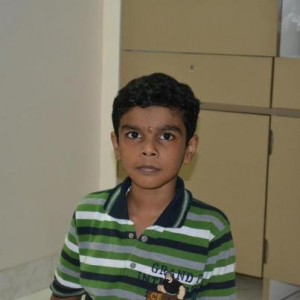Sailesh Mishra talks about representing India at the UN, and refusing to do Satyameva Jayate’s senior citizens episode in its original format.
by Vrushali Lad | vrushali@themetrognome.in
A slight and unassuming man, Sailesh Mishra (45) comes across as soft-spoken and pliable. But then he begins to describe how he got associated with the senior citizens episode on Aamir Khan’s TV show Satyameva Jayate. “I got a call from Aamir Khan Productions in September 2011. A woman called saying that she wanted to meet me for an episode they were shooting on senior citizens for the show. Since we get many such requests (at his Mira Road-based NGO Silver Innings), I asked them to send me a letter and then we’d see.
The letter was brought the very next day, while the director of the show explained the concept of the episode in detail. But I soon realised that they were planning an episode to show elderly people as sad, abused, dependent human beings. I immediately told the lady, ‘Please tell Mr Khan that if this is what you want to portray on the show, I don’t want to be a part of it.”
Sailesh has always been a champion of the “happier side of old age”, which was why he started his NGO, Silver Innings, in 2008, as a means to help create a “sustainable gerontology”. He explains, “We often berate those who we feel are not taking care of the elders in the family. But you must understand, most children are not bad, they don’t wilfully neglect their parents. It is just that there are not enough options created by the government and society when it comes to elder care. Unlike in the West, we don’t have such services as assisted help for the elderly, or a service to provide groceries, or cooked food, or do other chores. We don’t even have enough NGOs that work for the causes of the elderly.”
Sailesh’s NGO was registered with the United Nations’ Open Ended Working Group (OEWG) on Ageing convention held annually in New York, last year, owing to the efforts of Susan Somers of the International Network for the Prevention of Elder Abuse (INPEA). “I got the opportunity of participating in the 3rd such OEWG held this year. On the opening day, the Indian ambassador gave a rosy picture of the current scenario of health care for the elderly in India. He even had the nerve to say, ‘Why do the elderly need rights? Their development is the responsibility of the society and their families. What can the government do?’”
To Sailesh’s huge amazement, he got the chance to make a statement on the floor of the House. “Only six people got a chance to speak that day, and I was the first,” he beams. “I gently but firmly refuted what the Indian ambassador had said, and I stressed the need for the government to be more proactive in implementing several schemes for the elderly in India. I didn’t see him for three days after that!” (Read Sailesh’s statement made on the floor of the House here.)
Of the member states, Costa Rica and Argentina were the most passionate about promoting the cause of gerontology, he says. “These two would even hold a briefing for NGOs every morning. But the EU and the US were extremely against the state having a stake in elders’ care, because they do not want to spend on it.”
An interesting dimension to this issue, he says, is that the Western countries, while reducing budgets assigned to social welfare, are aggressively studying the family concepts prevalent in south Asian countries, where parents and their children live together all their lives. “But by contrast, we in India are going towards the Western concept of nuclear families and even smaller units. Where does that leave our elders?”
But what he took away from his UN outing was the “inspiration” he felt after meeting people who had been working for the cause of elder care for decades. “Meeting such dedicated people tells you that you are on the right track, and that you still have so much to learn,” Sailesh says.
His own brush with the elderly
In 2004, Sailesh was working with the Dignity Foundation, a time that he says was when he “accidentally came into this field.” He says, “Through the Foundation, I was sent to Neral to help in the building of the elders’ township. I found that getting the architecture changed to be senior citizen-friendly was an uphill task. The architect just couldn’t understand why I wanted land gradients to be gentle, why appliances and cabinets needed to be at eye level, why the fittings and fixtures had to easy to use,” he remembers.
He stayed on as a resident at the township, monitoring its daily working and putting in work at the 24-hour dementia centre there. “I had varied experiences while dealing with sufferers of dementia. Many times, we didn’t know how to deal with them. That set me thinking. Nobody discussed this issue, and there was nothing written about it.” He started writing articles about his experiences, posting them on the Internet. “I think I would have found this cause at some point in my life,” he muses. “I come from a family of 100 people, and we all stayed at a waada at Palghar. But when I was very young, my mother told me, ‘Don’t join in the family business. Do something different with your life. Everybody works for themselves, you should work for others.’”
He finally started Silver Innings and found the inner peace he had been looking for. “I give talks at several places, hold a lot of workshops, travel all over the country. But I never talk about the NGO. That was not why I started it. The focus has to be on the issue, and it is my job to plant the idea in as many people’s minds as I can.”
Engaging the young to help the old
Sailesh is a passionate user of social networking to further his cause, the rationale of which has been questioned by many. “People ask, ‘How many senior citizens use social networking? How will you reach them on the Internet?’ But I am actually targeting the youth and the middle-aged persons in industry. If I can convert them, they will go home and talk to their parents, or devise ways to reach out to the elderly,” he says.
A major problem facing India’s elderly is that their numbers are only set to rise in the coming years. “How are we, as a country, going to accommodate these huge numbers of people? It is time, and it has to be done right away, that the government actively think up ways to utilise this mass of people’s life experience, their working knowledge and their skills. What is the sense in forcing a person to retire at 60 years of age, if he or she is able to work? Also, there is an urgent need for industry to provide services to this huge untapped population. You can have small businesses that deliver cooked meals to elders living alone, or get elders in an area registered with a trusted firm that supplies domestic helps, repair mechanics and others. There is also a need to modify our architecture and infrastructure to become more elder-friendly. Most importantly, we need more old age homes (there are just six in Mumbai) and all of them should be inside the city, not banished to the outskirts.”
Sailesh Mishra can be contacted on silverinnings@gmail.com/sailesh@silverinnings.com. His NGO also runs an ageing centre, organises memory camps and runs an elder helpline, among other things.





